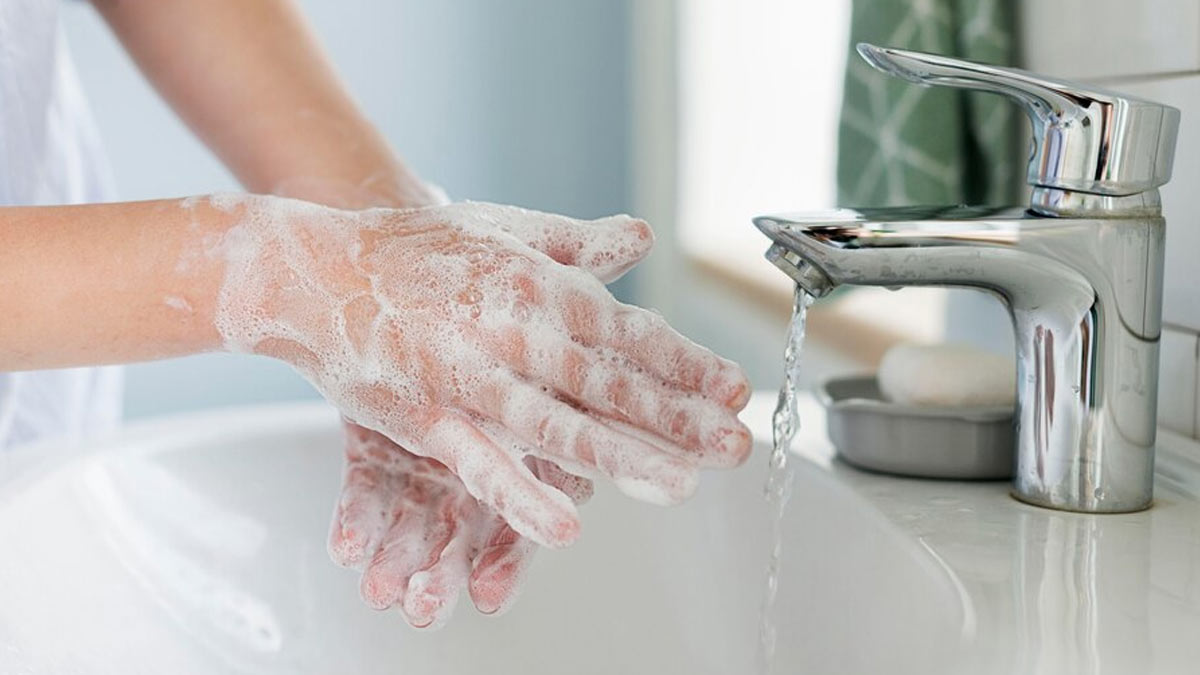
Frequent handwashing provides several benefits, particularly in preventing the spread of germs and reducing the risk of respiratory and digestive infections. During the COVID-19 pandemic, handwashing, alongside mask-wearing and social distancing, became a highly recommended preventive measure. Even post-pandemic, it remains a regular practice for maintaining overall hygiene and safeguarding health. However, our expert advises caution against overwashing your hands to the point that it may lead to skin rashes. Here's what to know.
Table of Content:-
Also Read: Why Hand Washing Is Essential for Your Health and Well-being
Does Frequent Handwashing Cause Rashes?![]()
In an interaction with the OnlyMyHealth team, Dr Shireen Furtado, Senior Consultant, Medical and Cosmetic Dermatology, Aster CMI Hospital, Bengaluru, suggests that frequent handwashing can have a big impact on the health of your skin, often leading to dryness and irritation.
"When you wash your hands often, the water and soap can remove the natural oils from your skin that are important for keeping it moisturised and protected. This can weaken your skin's barrier and make it more sensitive to irritants and allergens in the environment. As a result, you may develop rashes, redness, and even conditions like dermatitis," he explains.
Listing a few ingredients, he notes that fragrances, preservatives, and certain alcohols can cause allergic reactions or sensitivities in some people.
Synthetic fragrances, often used to improve scent, can be particularly irritating and lead to contact dermatitis in people with sensitive skin. Preservatives like parabens and formaldehyde-releasing agents are commonly added to extend shelf life but can also trigger adverse skin reactions. While high concentrations of alcohol are effective at killing germs, they can also strip the skin of its natural oils, leading to dryness and irritation.
Irritant contact dermatitis is particularly common among nurses due to repeated use of hand hygiene products, particularly soaps and other detergents, research highlighted, adding that the prevalence ranges from 25–55% and as many as 85% have a history of having skin problems.
Handwashing Techniques That Can Prevent/Minimise Skin Rashes

Specific handwashing methods can effectively reduce the occurrence of skin irritation.
According to Dr Furtado, it is essential to explore various techniques, such as using lukewarm water instead of hot or cold, choosing mild, fragrance-free soaps, and using proper drying methods. These methods can all contribute to a gentler handwashing experience.
Additionally, the frequency of handwashing and the duration of exposure to water and soap can also significantly impact skin health. Therefore, it is important to comprehensively examine these factors to establish best practices that prioritise both hygiene and skin integrity.
Also Read: Skin Rash Or Eczema? Expert Helps You Find Out The Difference
Signs To Watch Out For![]()
Common signs of a rash resulting from excessive or improper handwashing include:
- Persistent redness
- Dryness and flaking
- Development of small bumps or blisters on the skin
Furthermore, if these symptoms are accompanied by significant discomfort or swelling, or if the rash does not improve with the cessation of handwashing or the use of moisturisers, it is advisable to consult a healthcare professional.
Timely medical intervention can help prevent further complications and provide appropriate treatment options tailored to the specific condition of the skin, Dr Furtado concludes.
Also watch this video
How we keep this article up to date:
We work with experts and keep a close eye on the latest in health and wellness. Whenever there is a new research or helpful information, we update our articles with accurate and useful advice.
Current Version

